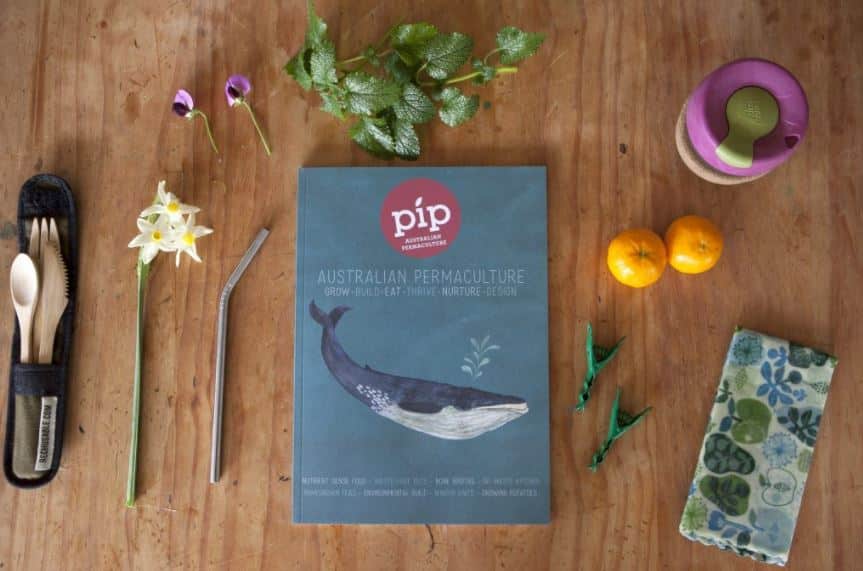Permaculture title Pip magazine is a print success story to come out of 2020. Founder and Publisher Robyn Rosenfeldt explains how Pip’s strong online presence helped to triple magazine sales over Australia’s COVID-19 lockdown period, paving the way for the magazine to increase its print editions.
Despite 2020 seeing the closure of some print magazines and newspapers, niche publications – especially those with a sustainable lifestyle focus – have been growing. Australia’s sustainability and permaculture lifestyle title, Pip magazine, which has been in publication since 2014, is a good example of this.
Pip magazine sales during the first month of Australia’s lockdown increased by 300 per cent, and its overall subscription numbers increased by 150 per cent. Retail sales increased by 20 per cent despite interruptions to airport newsagencies.

The increased reader and buyer interest in Pip magazine’s print and digital content has resulted in Founder and Publisher Robyn Rosenfeldt taking on more staff and investing in new systems and processes to increase the number of magazine issues from its current three-edition distribution. From 2021, the magazine will be available via four editions, out in February, May, August and November.
Not only that, Pip has just been announced as a finalist in the Mumbrella Publish 2020 Awards in the coveted Publishing Company of the Year category.
TMSN Editor Lyndsie Clark caught up with Rosenfeldt to chat about starting a magazine with little publishing experience, using a multi-platform approach to drive magazine growth, and what it really means to build an authentic brand.

Setting the picturesque scene: how Pip magazine began
Today, Rosenfeldt produces Pip magazine from her two and a half acre property in Pambula, New South Wales, with a small team of staff and freelancers that work either in her converted-barn office or remotely. But when Pip first began, it was just Rosenfeldt.
Rosenfeldt fell into magazine publishing after a career as a freelance photographer and journalist.
“I was a photographer to begin with,” she explains “I did lots of travel photography. I’d travel, and take photos, then come home and try to get them published. But often I’d be told that an article was needed to accompany the photos. So I taught myself how to write, did a few courses, and became a freelance journalist.”
It was this learn-while-doing attitude that led Rosenfeldt to start Pip magazine.
“I’d always had an interest in gardening and growing food and permaculture,” says Rosenfeldt.
After making the tree change to Pambula from Melbourne, she got the opportunity to edit a local magazine about sustainability.
“I found that I could use my photography and writing skills, and focus on my interest in sustainability. I was able to bring them all together in one place. And I loved it.”
Robyn Rosenfeldt, Publsiher, Pip magazine
Rosenfeldt did a permaculture course and realised that there was no permaculture magazine in Australia, despite the principles originating in Australia.
“So I decided to start a permaculture magazine. I was seven months pregnant at the time, and I had two other small kids. So I let the idea brew for a while. Then I started it a couple of years later, with three kids under six.”
Pip was originally funded through a crowdfunding campaign. Enough money was raised to pay for the first print run, which meant that Rosenfeldt could make Pip a reality without starting in debt. Pledges came in from over 270 supporters, many of who still subscribe to the magazine today.
While Rosenfeldt had some experience editing the local sustainability magazine, she’d never worked in a publishing environment before.
“I kind of just made that up as I went along and maybe didn’t know the full extent of what was involved, which might have been a good thing,” she laughs.
“There are so many different aspects of a magazine. There’s so much you’ve got to keep your head around: you’re the publisher, the editor, the manager, the hirer, and the computer tech person.”
Rosenfeldt says that her small but dynamic network of staff, contractors and freelancers is incredibly helpful in putting together the magazine’s print and online content.
The end result is a visually beautiful magazine that is produced to be treasured and revisited, reaching over 56,000 print readers with practical and accessible content about living a sustainable life using permaculture principles.

Using a multi-platform approach to drive magazine subscriptions
Pip magazine has a strong online presence, producing online-only and repurposed magazine content on its website (which receives over 75,000 pageviews a month), a fortnightly e-newsletter sent to 15,500 subscribers, a podcast, practical videos, and social media accounts with over 50,000 followers.
Rosenfeldt explains that she sees maintaining a strong online relationship as a way to drive magazine subscription sales.
“Having that online presence is really important as far as just getting out to a wider audience. You can’t just rely on people picking up your magazine in the newsagent these days. You’ve got to be online with interesting articles that people want to know about.”

This became apparent as Australia went into lockdown due to the COVID-19 pandemic earlier this year. The Pip team began sharing more of its knowledge for free online to help people navigate the changes to their lifestyle.
As a result, Rosenfeldt says that Pip’s web visits more than doubled at the beginning of the first lockdown, most of which was organic search traffic.
“Most people were googling things to do with gardening, growing, making fermented sourdough recipes, and they were coming across us and then through that, they were then subscribing.”
Pip magazine’s sales tripled, and their newsagent sales increased by 20 per cent.
“I thought that newsagent sales would go down because we weren’t in sight – some newsagents weren’t operating, and some weren’t taking stock. But I think people are more interested in the subject matter thanks to the pandemic.
“We talk about how to live more lightly on the earth, how to be more self-sufficient, how to live in a way that you’re not necessarily reliant on big supermarket chains and mass industrial agriculture. So when COVID-19 hit and all those things halted or had issues, people began looking at ways they could be more self-sufficient – grow their own food, make things themselves.
“They came across us because we had so much information online. All of our touchpoints came together to reach people in different places – whether via Google search, Facebook, a podcast or their emails.
“I think it was a combination of people finding us for the first time and others who were already following us getting a bit more serious about permaculture and choosing to subscribe or pick up Pip in a newsagent.”
Permaculture podcast: providing another touchpoint
In line with her multi-platform approach, Rosenfeldt was early to the podcast game, starting the Pip Permaculture Magazine podcast three years ago.
While Rosenfeldt says that it’s hard to tell how the podcast has impacted the engagement that Pip has with its subscribers, she says that the episodes can achieve upwards of 7,000 listens.
“It’s another avenue to reach people and engage with them in a different way,” she says.
“People who might not sit down and read a magazine may listen to a podcast, or if they’re not aware of the magazine they’ll find out about it. And if they do subscribe to the magazine, we usually interview people who have been featured in the magazine, so it gives them a more in-depth exploration into the article.”

Building authenticity and trust
As a magazine about permaculture and earth care, it’s important that Pip demonstrates its commitment to the environment.
Rosenfeldt explains that this was a natural step for her to take because she lives her life by these principles. The Pip magazine office is run with minimal electricity and minimal waste, using solar panels, rainwater, and a fire for heat.
“It was really important in the beginning to make sure I was using vegetable inks in the printing and recycled paper. I’m now using FSC certified paper because I weighed up the pros and cons of recycling by considering the amount of energy that goes into the actual recycling process and getting it shipped back versus using paper from trees that have been grown specifically to be environmentally friendly.”
The magazine is hand-packed and posted in recycled paper envelopes, instead of using plastic wrapping.
“I think this is really important. When people receive the magazine they get this beautiful envelope and its part of the experience of receiving it.”
“You can’t write a magazine about saving the planet if you’re destroying it in the process.”
Rosenfeldt says that this principle also extends to advertising.
“If someone’s interested in advertising, but they don’t meet our ideals, then we won’t take them on. And I have said no to quite lucrative advertisers because of that. The sale isn’t worth it to take away from the authenticity of what we’re doing.
“One of our strong points is that we’re completely authentic in what we’re doing. And we’re not going to compromise that for some small monetary saving or addition.”
Rosenfeldt’s top 3 tips for starting a magazine
- Commit
“I think firstly, you just have to jump in and commit, and just give it your all.”
- Find a niche that people are passionate about.
Rosenfeldt says that it’s important to find a niche that people are passionate about, and it helps if it’s also a passion of yours.
“If you’re going to spend all that time writing about it and talking about it., it helps to have a passion for it,” she says.
- Build your audience and your network.
“Don’t just think about getting the magazine out the door. Really work on creating contact, getting in touch with the people who are interested in your niche in as many ways as possible – through social media, digital, podcasts – wherever your audience is.”







